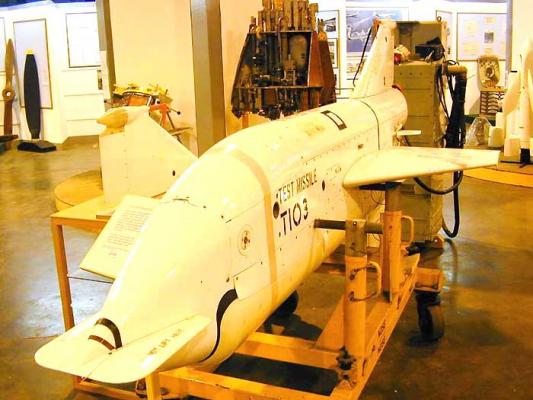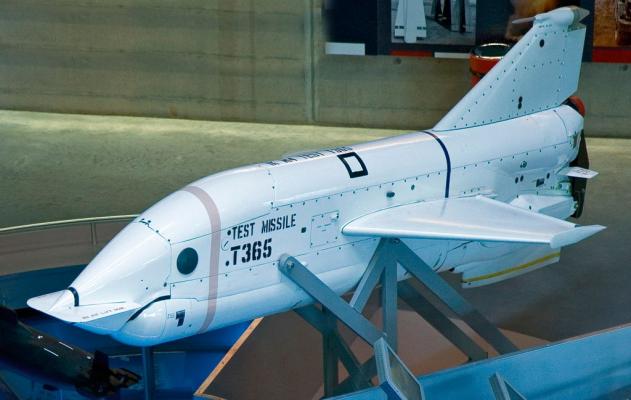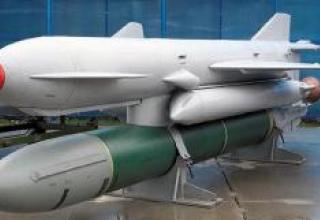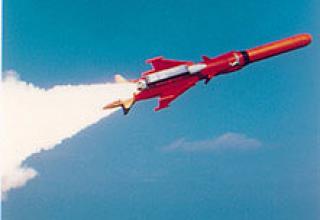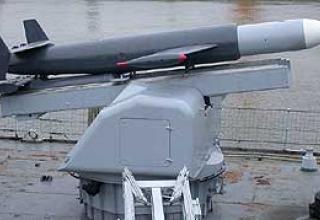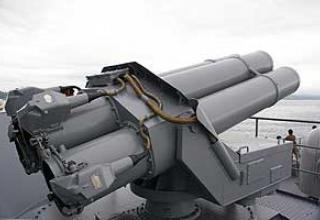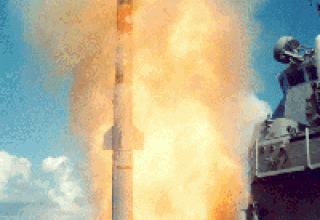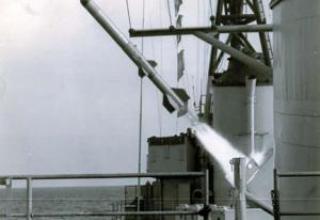To combat submarines, British, Australian and Brazilian Navy surface ships are equipped with Ikara anti-submarine guided missiles (ASLCs) developed by British Aerospace and Australian Aerospace Technologies Australia.
The first specimens of Ikara anti-submarine guided missiles entered service in 1963 and have been repeatedly upgraded since then.
Composition:
The rocket (see diagram), which is an aircraft with a sub-fuselage location of a small-size anti-submarine torpedo, is launched using a specially designed dual-mode solid propellant rocket engine. It provides acceleration and flight at low altitude (up to 300 m) with subsonic speed. The ship's Automated Combat Control System (ABCS) continuously provides new current data on the location of the firing ship, the SLCM and the target and, based on this information, generates a flight path correction command for the missile. Immediately after launch, it is accompanied by a tracking system that transmits control signals to the onboard transceiver. Commands of the onboard control system are processed by elevons located at the rear edge of the wing. The flight altitude is controlled by a barometer included in the missile control system circuit. To ensure flight stability, small stabilisers are used in the tail of the missile and a spoiler located on the cut of the rocket engine nozzle. The operation of onboard systems is provided by a thermal battery.
When approaching the target location triggered pyropatrons, separating the torpedo from the missile. The torpedo is driven by a parachute, which is separated at the moment of actuation and then its engine is switched on. The rocket then continues its flight with the engine running. Driving it away from the location where the torpedo is actuated eliminates interference that occurs when the missile falls into water and may interfere with the torpedo guidance system.
Small-size Mk46 (US), Type 42 (Sweden), A244 and 244/5 (Italy) anti-submarine torpedoes can in principle be used as a warhead for the Ikara SLBM, but only US models are usually used.
In firing these missiles, account is taken of the firing data produced by the ship's AAS based on those obtained either from the ship's hydroacoustic station or from other sources of designation. Contact with the target is not necessary for the firing ship.
Before firing, the missile is fed from a sub-deck magazine to a special launcher that provides azimuth rotation and the necessary elevation angle for firing in a given direction.
Prior to the appearance of hydroacoustic stations with long towed antennas on ships, the potential of the Ikara SLC was not fully exploited, as its range usually exceeded that of the station.
The disadvantages of the anti-submarine complex "Ikara" include its large weight and dimensions. The modernization of the ship's equipment, carried out in the 80s, made it possible to noticeably improve these parameters. If earlier 13 blocks (each weighing more than 200 kg) were used to control the complex on board the ship, after the modernization only three modules are needed, which are placed under the deck. In addition, the tracking system of the entire Ikara anti-submarine complex has been improved.
According to foreign press reports, work is under way to create a promising Super Ikara SAR, which involves the same partners that developed the Ikara complex.
Characteristics:
| Range of fire maximum , km | 20-24 |
| The length of the rocket, m | 3.43 |
| Wingspan, m | 1.52 |
| Rocket body diameter, m | 0.61 |
| Starter weight, kg | 300-310 (no torpedo) |
| Flight Speed, m/s | 200 |
Testing:
The combat operation of the complex and the functioning of its facilities in the process of firing are as follows.
Pulsed target designation radar AN/MPQ-50 and target designation station AN/MPQ-48, operating in continuous radiation mode, search and detect air targets. At the command post of the AN/TSW-8 battery during its operation together with the information processing station (and in the advanced firing platoon - at the control post AN / MSW-11) on the basis of the data received from these radars are solved problems of identification of targets, air situation assessment, identification of the most dangerous targets, issuing target designation of the firing section. After the target is captured by the illumination station AN/MPQ-46, it is accompanied in automatic or (as a rule, in a complex interference situation) manual mode. In the latter case, the operator of the battery command post uses the range information obtained from the radar rangefinder AN/MPQ-51. In the process of escorting the target, the backlighting station irradiates it. The launcher with the missile selected to fire the target is guided to a preemptive point. The homing head of the SSD captures the target.
After the command comes to the launch (from the battery control or from the control point of the forward firing platoon) the missile descends from the guide and, having reached a certain speed, starts to aim at the target. In doing so, its homing head uses signals reflected from the target and received from the illumination station (reference). The assessment of the firing results is made on the basis of the data obtained from the Doppler signal processing of the target illumination station at the information processing point.
Upgrade .
Improved Hawk" modernization program, which started in 1979, has now entered the third phase. At this stage, it is planned to carry out work in a number of areas, the main of which are:
- -Giving the complex the possibility of simultaneous hitting several targets by using an additional antenna with a wide beam in the radar. It is believed that when shooting at multiple targets, their range of engagement will be 50-70% of the range achieved when shooting at a single target.
- - Replacement of the battery control and information processing point by a control post, mainly similar to that of the forward firing platoon, but differing in the presence of a second control post and a digital computing device. Both control desks of the post are to be equipped with digital air-detection displays similar to those of the Patriot SAM system.
- - Increasing the mobility of the SAMs while reducing the number of transport units of the complex (from 14 to 7) by providing the possibility of transporting the SAMs to the PU and replacing the M-501E3 transport and charging machine with a machine equipped with a hydraulically driven hoist, which is based on a truck. On the new TZM and its trailer will be transported one rack with three ZUR on each. It is reported that the battery deployment and shutdown time will be halved.
- - Radar and PU equipment of the complex with navigation equipment and digital computing device to enable the complex to fire targets according to data from radar AN/MPQ-53 SAM "Patriot".
After the completion of the modernization program of "Improved Hawk" SAM systems in the U.S. and other NATO countries it is planned to create modifications of this complex that would better meet the requirements for combating modern means of air attack.
Thus, the American company "Reitheon" is developing ACWAR [Agile Continuous-Wave Acquisition Radar], which can be replaced by radars of both types. This three-axis station will have an antenna with electronic scanning of the beam on the angle of the place and mechanical - on azimuth. Mention is also made of the possibility (in case of creating a new modification of the missile) to use the radar ACWAR to point the SAM in the middle section of the flight path, excluding the target illumination station from the SAM.
The new modification of the Advanced Hawk designed for the Norwegian Armed Forces includes a three-axis LASR (Low Altitude Survellance Radar) radar developed by the American firm Hughes on the basis of the AN/TPQ-36 artillery position detection radar.
Sources:
- К.Сергеев "Противолодочные ракетные комплексы" , Зарубежное военное обозрение N7, 1989 год
- http://bwana.ru/?p=5606
